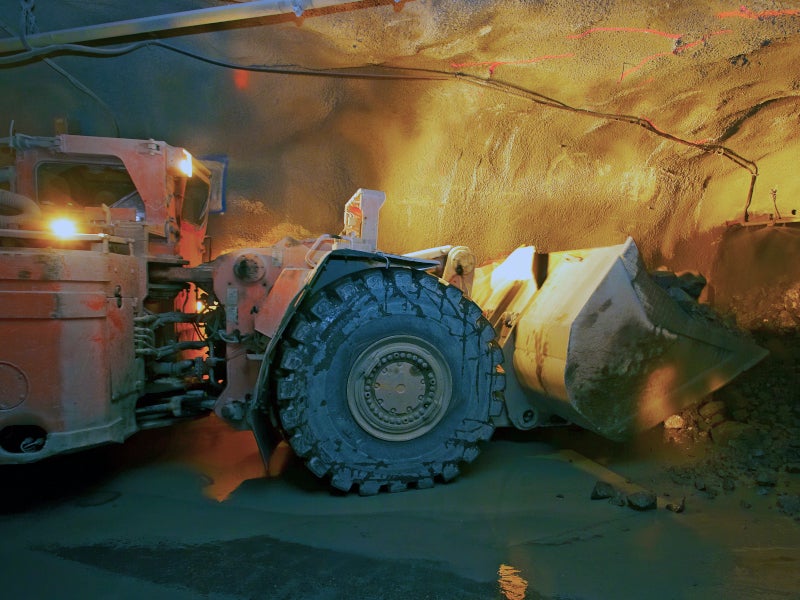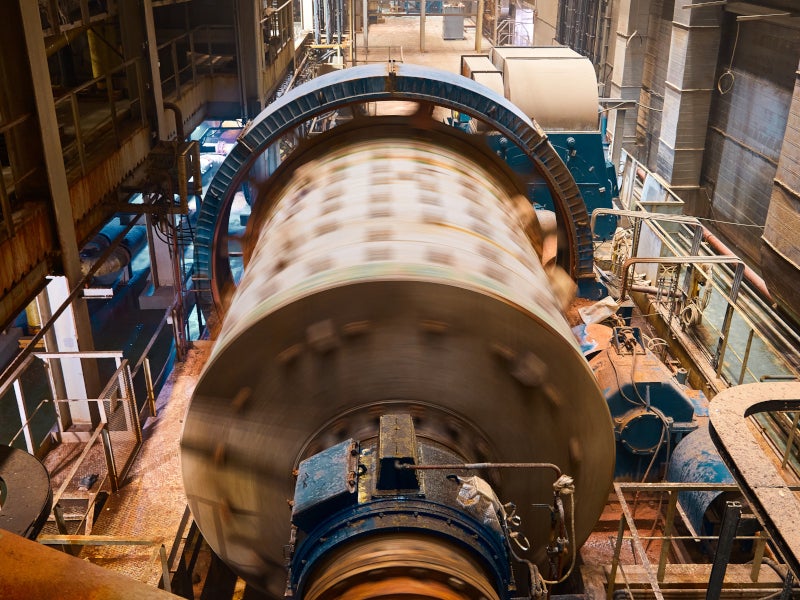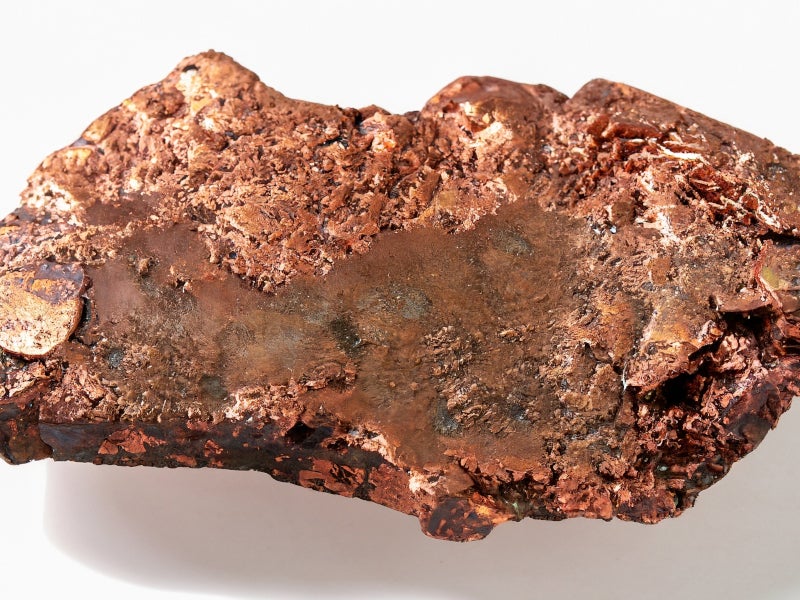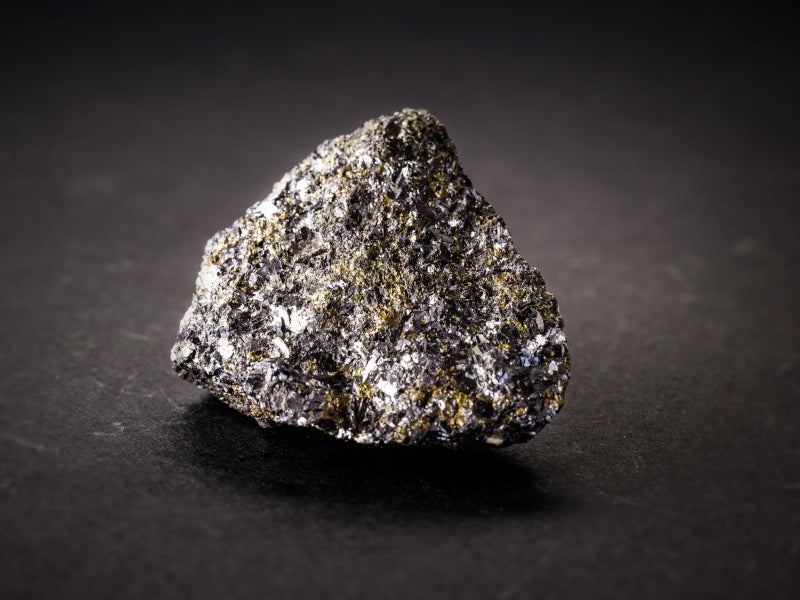The Neves-Corvo project in the Alentejo district of southern Portugal is an operational underground polymetallic mine. It is mainly a copper and zinc mine that produces copper, zinc and lead concentrates.
Lundin Mining, a Canadian mining company, is the owner of the project. Underground mining operations at Neves-Corvo began in 1988.
The mine produced 31,906 tonnes (t) of copper and 82,435t of zinc in 2022. The current mine life is expected to continue up to 2032, while 2028 will be the final year of full production.
A Zinc Expansion Project of the mine was approved in 2017 and completed in 2022. It aims to increase zinc mining and processing capacity to 2.5 million tonnes per annum (Mtpa) by 2024, with full production expected in 2029. A shaft expansion currently underway to further raise the capacity to 6Mtpa is scheduled for completion in 2024.
Location
The Neves-Corvo mine is situated in the Alentejo province of southern Portugal, 15km southeast of Castro Verde and 200km from Lisbon. The mining concession covers an area of 13.5km².
Geology and mineralisation
The Neves-Corvo mine is located within the Iberian Pyrite Belt, a geological formation renowned for its rich volcanic massive sulphide deposits. The project comprises seven deposits: Corvo, Graça, Lombador, Monte Branco, Neves, Semblana and Zambujal.
The mineralisation process at Neves-Corvo is primarily controlled by the formation of massive sulphide deposits on or near the seafloor. Mineralisation occurs as huge stratiform sulphides containing high volumes of sulphide minerals and vein-like stock work in the footwall. The mineralisation types are categorised into pyritic, polymetallic and copper-pyritic.
Reserves
The proven and probable reserves in the copper zones of Neves-Corvo are estimated to be 21.2Mt, grading 2.1% copper, 0.6% zinc, 0.2% lead and 33g/t silver as at December 2022.
The zinc zones hold proven and probable reserves of 22.3Mt, grading 0.3% copper, 7.5% zinc, 1.7% lead and 63g/t silver.
Mining method
The Neves-Corvo mine currently produces ore from Corvo, Graca, Lombador South & North, Neves South & North and Zambujal. Lombador is the largest sector, containing more than 65% of the current mineral reserves.
The project utilises a variety of mining methods for copper and zinc extraction, which include drift and fill, bench and fill, optimised bench and fill, mini bench and fill, uphole bench and fill and sill pillar recovery.
Drift and fill is the primary mining method employed at Neves-Corvo, while bench and fill methods are used for thicker mineralisation. Mini bench and fill is a hybrid method that increases the productivity for the orebody with a thickness between 10m to 15m.
The uphole bench and fill method has been in use since 2019 in areas that are geotechnically stable with orebody thickness greater than 18m. A single access is used for both drilling and mucking.
The mine uses diesel-powered LHDs (load, haul, dump) as the main loading and hauling equipment. Drifting and stope production drilling works are handled using conventional electro-hydraulic drill rigs.
Zinc expansion project details
The Zinc Expansion Project at the Neves-Corvo mine elevated the nameplate capacity to around 2.5Mtpa. The enhancements include a new crusher station, an advanced conveyor system and upgrades to the main hoisting shaft. The expansion also included extensions to the mine’s ventilation, pumping and electrical distribution systems.
The key zinc source for the expansion is the Lombador orebody, which is mined using bench and fill methods, along with a smaller proportion of drift and fill.
The coarse ore is fed to a semi-autogenous grinding mill and a secondary VTM-1250 Vertimill.
Zinc flotation is handled by six 100m³ tank cells, with rougher concentrate undergoing cycloning and regrinding before proceeding through a series of re-cleaner and cleaner cells.
The final zinc concentrate is thickened in a 20m diameter high-rate thickener and the thickened slurry is filtered using three METSO VPA 1530-40 filter presses. Recovered water from these processes is recycled for use in the plant.
Tailings are managed through a paste-fill preparation cycloning station, adhering to environmental management practices.
Copper ore processing
The plant processes several types of copper ores with ore exhibiting distinct processing characteristics and blended for treatment.
The initial phase involves pre-screening and crushing, aided by a Metso TS502 double-deck screen with an 800 tonnes per hour (tph) capacity.
The crushed ore is fed to the milling circuit via two grinding lines. The 260tph line one includes a rod mill and a primary ball mill in a closed circuit with hydrocyclones. Line two, with a capacity of 80tph, comprises a rod mill and a primary ball mill with hydrocyclones. The two lines converge at a common secondary ball mill in a closed circuit with cyclones.
The resulting slurry proceeds to the rougher flotation circuit. The concentrate from the rougher cells is further processed in a regrind ball mill and then passes through the DPR (rougher regrind) cells for additional cleaning.
The recleaning (RC) circuit recovers copper and zinc from the copper plant tailings. It includes flotation cells and an M3000 IsaMill for regrinding concentrates. The circuit produces a copper concentrate, with an additional zinc concentrate produced after zinc activation.
The final copper concentrate is thickened and pumped to pressure filters for dewatering. The plant operates with four filters, keeping one on standby. The RC circuit’s copper concentrate is dewatered separately and both concentrates are stored for either blending or sale.
Site infrastructure
The mine is well-linked to the national road network. The A2 highway, situated within 25km of the mine, is accessible via a paved road. The mine also benefits from a dedicated railhead that connects to the Portuguese rail network and the private harbour facility at the port of Setúbal.
The mine is integrated into the national power grid through a 22.5km 150kV, 50MVA rated overhead power line.
The Santa Clara reservoir supplies fresh water to the project site via a 400mm diameter pipeline.
Contractors involved
Mining One Consultants, a mining, geotechnical and geological consultancy, conducted the updated 3D numerical modelling of major excavations for the materials handling system, zinc expansion project and geotechnical analysis.
SRK Consulting, an international mining consultancy company, was responsible for the geotechnical studies.
Sustainable technologies provider Metso was awarded a contract to supply 19 reactor cell system flotation cells for the zinc expansion project.







